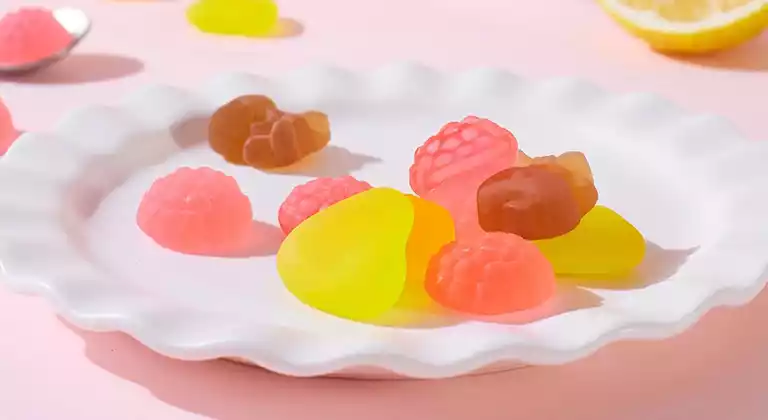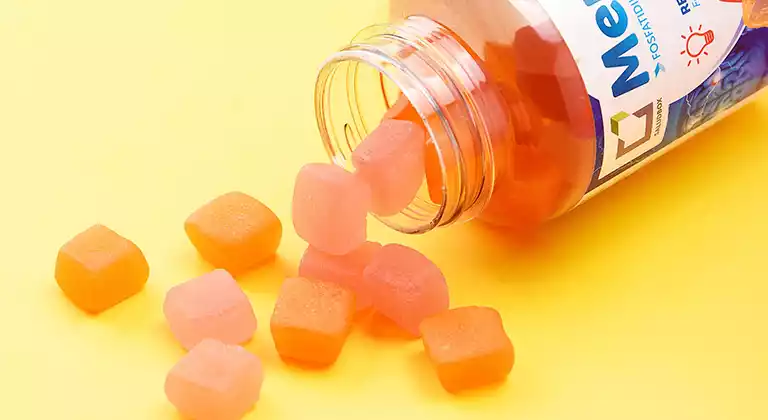The Birth of Gelatin Gummy Candies or Gumdrop
Do you still remember when you open a pack of iridescence gummy candies in your childhood, and the resilient juicy sweetness dancing on your tongue?

Although people extracted and consumed edible gelatin from animal bones and skins thousands of years ago, its manufacture as powder or granules didn't occur until the 19th century. Gelatin powder was made into sweet puddings and desserts by housewives. In 1845, Peter Cooper from the United States discovered the business opportunity and applied for a patent on portable gelatin powder. People were advised to add fruit juice and sucrose to the colorless and odorless powder to make gelled confection. Decorative copper molds were encouraged to shape them into animals and flowers styles, so it was considered the predecessor of gummy candies. Peter Cooper also included a recipe booklet inside the package to teach housewives and chefs how to use it.
In 1897, Peter Cooper sold his patent to Pearl Wait, a cough-syrup manufacturer. His wife named the product “Jell - O”. Instead of being sold alone, the gelatin powder was mixed with sucrose and artificial fruit flavorings. Perhaps the great success of this fruit-flavored jelly in the United States inspired transatlantic Germans intensely. The Haribo company launched gummy candies in 1922. The cute bear shapes and fruit flavors made them quickly prevalent around the world. It is said that the gumdrops produced by Haribo in a year could circle the earth several times if they were laid end to end.
The Elasticity and Advantages of Gumdrop, jelly candy

When the mixture of gelatin, sucrose and water is cooled, the gelatin molecules are attached each other by hydrogen bonds. The irregular curled structures become a regular triple helix structures and they are connected each other to form a three-dimensional network. Water, sugar and other ingredients are confined in its meshes. The gelatin network is the support skeleton of jelly candy, making it as elastic as a rubber. It also slows down the growth of sucrose crystals and prevents them from forming large crystals that taste coarse.
Since its melting point is lower than your body temperature, the melted gelatin will quickly release its inside flavors, whether you chew it or not. It is a feature other edible hydrocolloid don't possess. Carrageenan, pectin and agar are harder, less elastic and more brittle in texture. Their melting point is higher than body temperature, so these candies require constant chewing to bring out flavors. Although starch fondant, such as Turkish delight dissolves in the mouth, it is soft, inelastic and tends to stick your teeth means unpleasant mouthfeel.
Gelatin contains 18 amino acids as our nourishment. This is a characteristic that other edible gels do not have. Agar, pectin and carrageenan are all indigestible polysaccharides (dietary fiber) that do not provide any nutrition or energy. At the same time, the cost of gelatin is lower than other edible hydrogels. This gives gelatin gumdrop some price advantage in the market.
Disadvantages of Gummy Candies
Vegetarians and Muslims strongly reject this delicacy because it comes from animals, mainly pig and cattle, and some are extracted from fish or poultry. It offers only a single chewy texture to disappoint consumers pursuing diverse mouthfeel. In addition, if the temperature is not well controlled during transportation, especially in summer or tropical regions, the melted and sticky jelly candies will be unsalable.
Several methods have been attempted to address these odds, but none of them fully accesses to our anticipation. Candy manufacturers are turning to plant hydrogels derived from seaweed and citrus to replace gelatin. Pectin and agar are common ingredients in gelatin candies to increase their melting point. However, the price is inelastic, hard and slightly brittle mouthfeel.